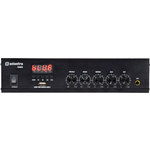Power Ratings: RMS vs Max vs Peak
There is much confusion about power ratings and output of amplifiers and loudspeakers. In order to clarify the different types of rating, it is necessary to understand some basics about audio signals.
Audio is a type of A.C. electricity, which stands for 'Alternating Current'. This means that electricity travels in one direction (+) and then the opposite direction (-) alternately. This is the same way that mains power electricity works.
SINE Wave
The most fundamental type of waveform in A.C. electricity is called a SINE wave. This is a flow of electricity that is constantly and evenly changing direction from positive to negative. Mains power is a SINE wave. Audio signals are usually much more complicated than this, but a SINE wave is very useful for measuring and demonstrating output power.

PEAK Power
The problem with measuring A.C. electricity is that it is constantly changing and the + / - elements cancel each other out to give a total result of zero. One possible solution is to measure the maximum levels or Peak-to-Peak level (p-p) or PEAK power. This is also sometimes called PMPO (Peak Music Power Output)

The problem with this is that it only takes the extremes into account. Also, peak measurements for an amplifier are different to those of a speaker. What is really needed is a measurement of the overall average level over time.
The solution is to measure RMS power, which stands for 'Root - Mean - Squared'.
RMS Power
Firstly, Square all values along the sine wave. This means multiply each voltage along the wave by itself, which gives a larger value but more importantly, turns all the negative values into positive.
Next, calculate the Mean average of all these squared values.
Finally, calculate the square Root of this average to bring the values back to normal size. This provides a true mathematical average of the wave.
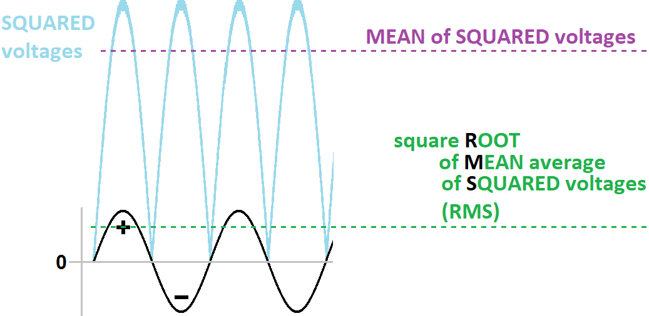
If audio was always a SINE wave, RMS would be the only ideal measurement. However, audio (especially music) is not usually a SINE wave and is very irregular, with lots of different frequencies, peaks and transients. For instance, the beat of a bass drum only happens briefly but is usually the loudest peak.

RMS is still the best mathematical measurement, but it may be useful to quote PEAK power as an upper rating.
For an amplifier, the peak output measures higher than the RMS output and the amplifier can actually deliver it. Some amplifiers can deliver higher than RMS power in short bursts before overload but not continuously.
However, for loudspeakers, this can be as much as 4 times the RMS value, since it is calculated as the maximum movement of the diaphragm (cone) or power through the voice coil before failure and is rated only to be sustained for a few milliseconds (ms).
Since we wouldn’t suggest driving audio equipment to destruction, we don’t recommend operating equipment at PEAK power.
In a similar way, we do not recommend under-powering passive loudspeakers, since driving a lower powered amplifier near to its limit can result in clipping, which is prone to cause damage in loudspeakers.
For the above reasons, there is often a happy medium. This might be called MAX. POWER, MUSIC POWER, CONTINUOUS POWER or other similar description depending upon the manufacturer. This is usually a recommendation that lies somewhere between the RMS and PEAK ratings and indicates the power that can be fed into a passive loudspeaker or the output power that can be expected from an active speaker or amplifier.
To summarise, the following is a guide for usage...
• Where RMS power is quoted, allow 25%-50% headroom in the amplifiers to drive speakers above this level.
• Subwoofers can usually even benefit from up to 100% headroom, since they deliver most of the peak transients.
• Where PEAK power is quoted, use this as a guide to stay below. PEAK power (up to 4 x RMS) often means the maximum power just before failure.
• Where MAX. POWER, MUSIC POWER, CONTINUOUS POWER or other are quoted (up to 2 x RMS), this is an indicator of continuous output of music or speech and a useful guide for matching amplifiers to loudspeakers.

Contents
Related Items
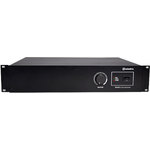
RS Series 100V Line Slave Amplifiers
360W 2U
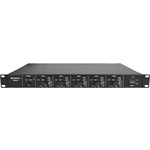
RMS-series Multi Zone 100V Amplifiers
5 x 60W

MM240 Mixer Amplifier 2 x 120W
2 x 120W
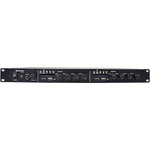
A14 Dual Stereo Mixer-Amplifier 4 x 160W
A14


RM-series 100V Mixer-Amplifier with WiFi
120W
